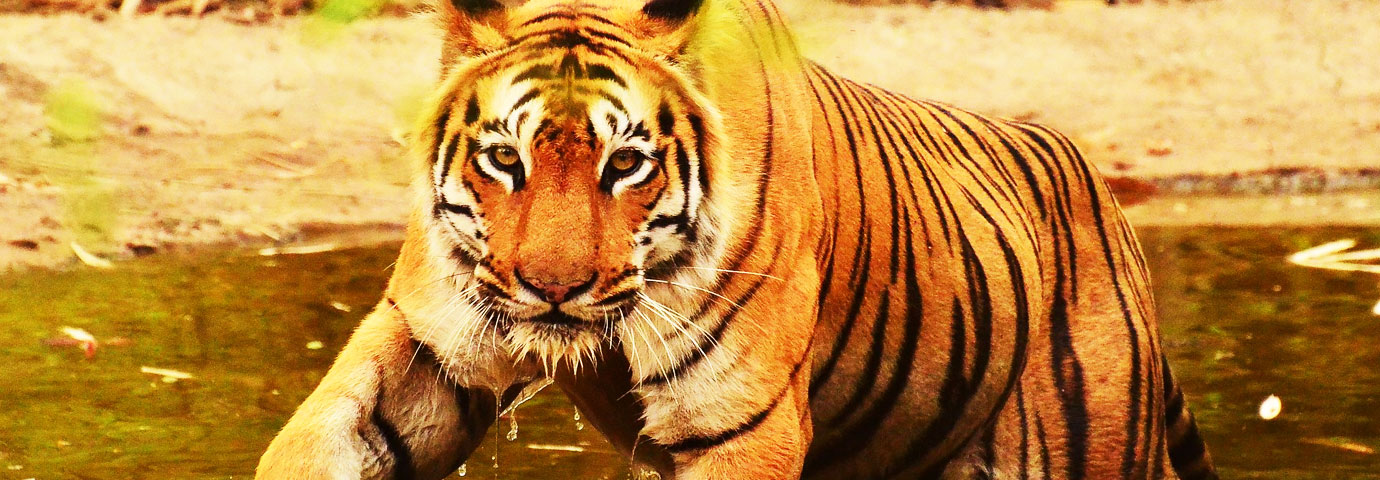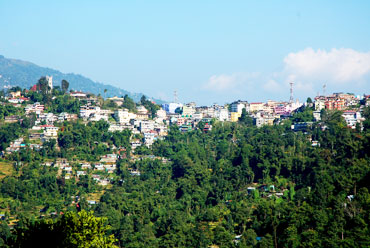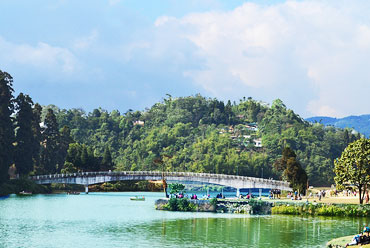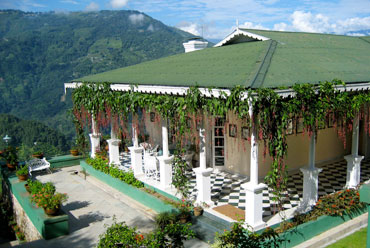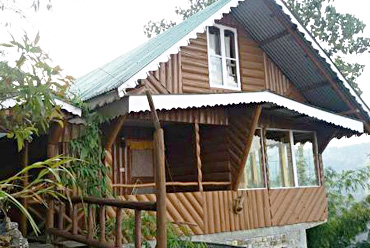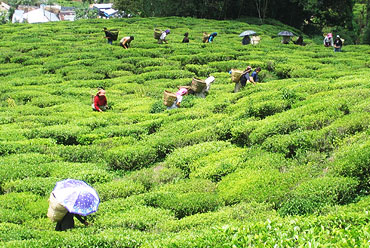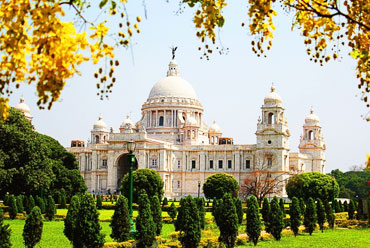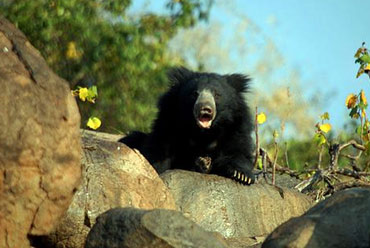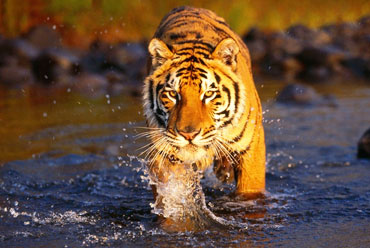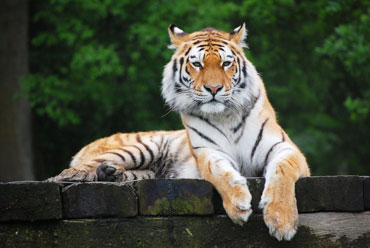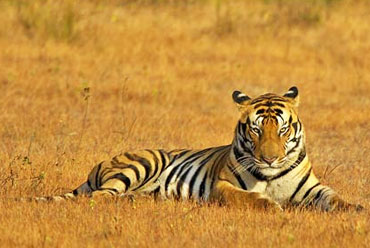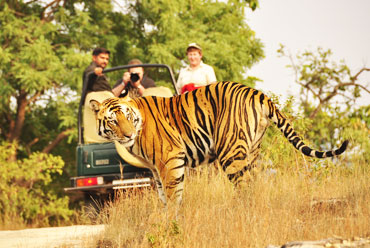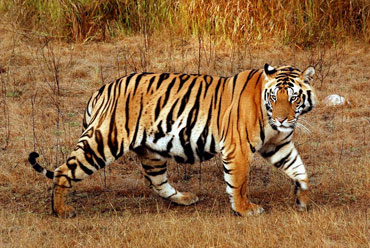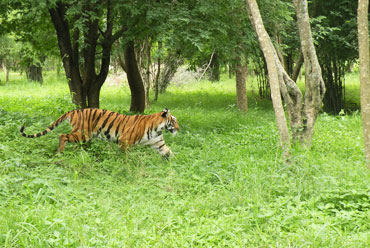Tourists Attractions
Tigers - Sunderbans is the largest estuarine delta in the world and the biggest colony of the Royal Bengal Tigers. These evergreen mangrove forests pulsate with myriad forms of life, which hide during hide tide and the ebbing tide reveals them on the glistening mud flats. The land is split by numerous rivers and water channels all emptying into the Bay of Bengal. It is believed that Bonbibi, the goddess of the forest, protects the woodcutters, honey-collectors and fishermen on their hazardous missions through the forest. For, as the local saying goes, `here the tiger is always watching you'.
Project Tiger was implemented here in 1973 and later the Sunderbans Tiger Reserve was demarcated over an area of 2,585-sq km. The core area of 1,330 sq km has been declared a Wildlife Sanctuary and a world heritage site. The reserve has a tiger population of 287(1984 census). The only mangrove species, the tiger here has adapted well to its habitat.
Reptiles - The Bhagabatpur Crocodile Project is a crocodile-breeding farm. Tours are organized by the West Bengal Tourism Development Corporation (WBTDC). This place is accessible through Namkhana. Both the West Bengal Tourism Department and the WBTDC organize conducted tours to the Sunderbans by their motor launches. Bhagabatpur is a hatchery of the largest estuarine crocodile in the world.
The Sunderbans provide important habitat for a variety of reptiles including river terrapin (Batagur baska E), Olive Ridley (Lepidochelys olivacea E), estuarine crocodile (Crocodylus porosus E), monitor lizard (Varanus flavescens), water monitor (Varanus salvator) and Indian python (Python molurus V).
The only species of turtle known to nest in the Sunderbans is the Olive Ridley but hawksbill (Eretmochelys imbricata) has also been caught in fishermen's nets. The creeks are spawning grounds for some 90 species of fish, 48 species of crabs and a large variety of molluscs.
Birds - Sajnekhali has a bird sanctuary and is the only place to have a hotel in this area. There is a Mangrove Interpretation Centre here. There are watchtowers at Sajnekhali, Sudhanyakhali, Netidhopan, Haldi and a number of other places.
The Sajnekhali area contains a wealth of water birds, noteworthy residents including Asian openbill stork (Anastomus oscitans), black-necked stork (Ephippiorhynchus asiaticus), greater adjutant stork (Leptoptilos dubius), white ibis (Threskiornis melanocephalus), swamp francolin (Francolinus gularis), white-collared kingfisher (Halcyon chloris), black-capped kingfisher (Halcyon pileata) and brown-winged kingfisher (Pelargopsis amauroptera).
This area is also important for waders, including the Asian dowitcher (Limnodromus semipalmatus R), a rare winter migrant. Interesting marsh birds found in the reclaimed areas include egrets (Egretta alba, Egretta garzetta and Egretta intermedia), purple heron (Ardea purpurea), which is a rare vagrant from Africa, and green-backed heron (Butorides striatus).
Birds of prey include osprey (Pandion haliaetus), Pallas's fish eagle (Haliaeetus leucoryphus), white-bellied sea eagle (Haliaeetus leucogaster), grey-headed fishing eagle (Ichthyophaga ichthyaetus), peregrine falcon (Falco peregrinus), Oriential hobby (Falco severus), northern eagle owl (Bubo bubo) and brown fish owl (Ketupa zeylonensis).
Other interesting places in the area include Netidhopan, which has the ruins of a 400-year-old temple, Holiday Island, which is a retreat of the barking deer and Kanak, which is the nesting place of Olive Ridley Turtles. Piyali is 72 km from Calcutta and is a gateway to the Sunderbans. It is being developed as a tourist complex.

